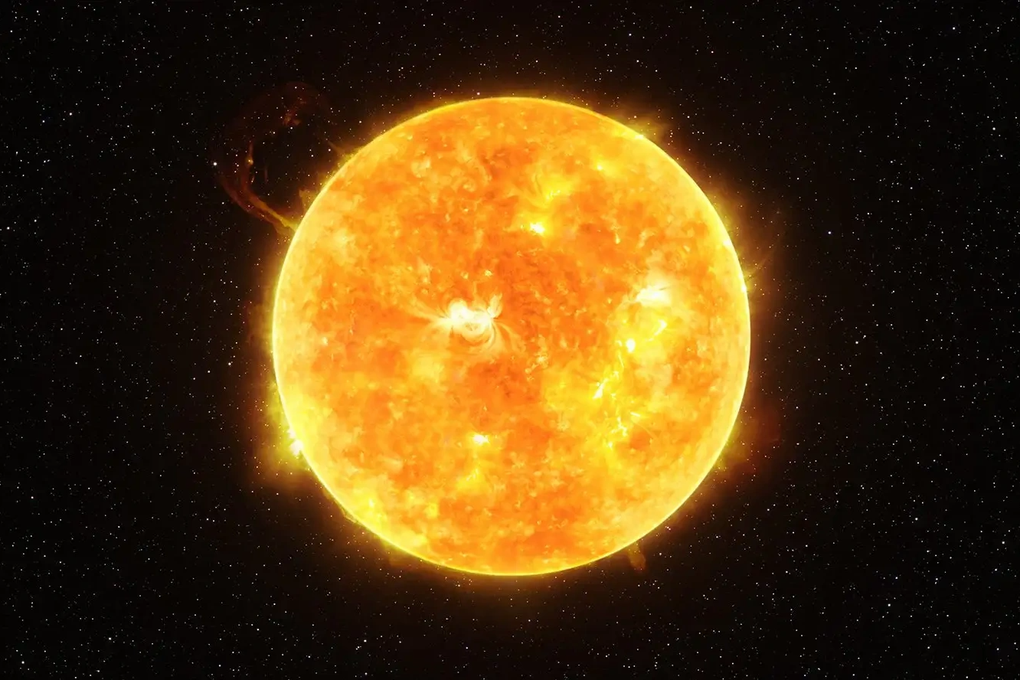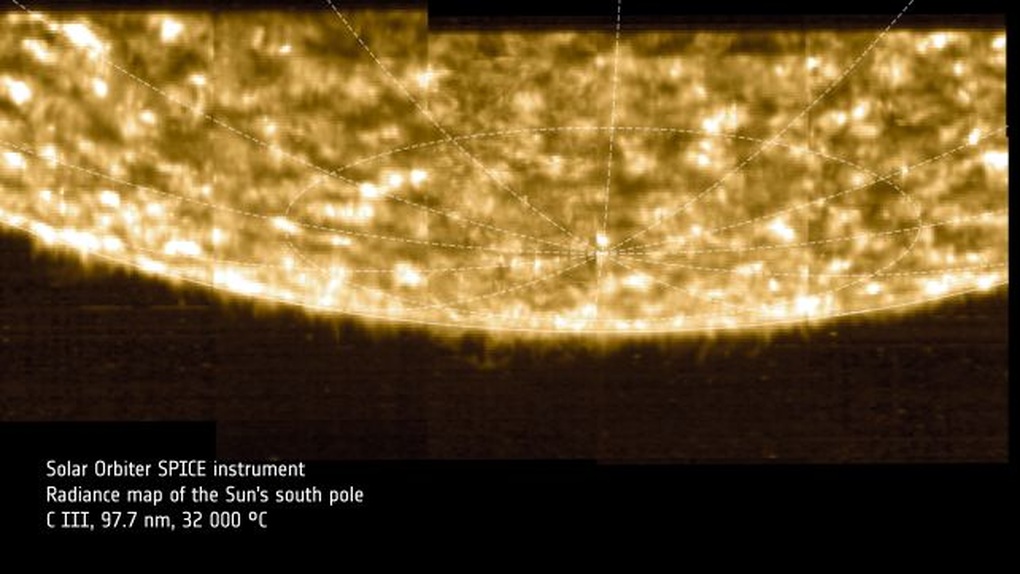A historic turning point in astrophysics research

The Sun's south pole imaged for the first time by the Solar Orbiter (Photo: ESA/NASA).
Today (June 12) marks a milestone in the history of space exploration as the Solar Orbiter probe provides the first clear image of the Sun's south pole, a region that humanity has never directly observed before.
The image is not just a rare photo taken from space, but also opens a new chapter in solar physics, where the mysteries of the magnetic field, solar wind and 11-year cycle of the central star of the Solar System begin to be systematically and scientifically unraveled.
The Solar Pole: Unexplored Land
Many people still think that, because the Earth and human observatories all orbit the Sun, we will always have a panoramic view of the star at the center of the system.
However, in reality, we only lie on the ecliptic plane, or the apparent path of the Sun across the celestial sphere, so the star's poles are always out of direct view.
For decades, scientists have likened the Sun’s poles to a “blank slate” on the map of space. This means that it holds great potential, but is also extremely challenging to reach.
This became even more important when it was discovered that every 11 years, the Sun's magnetic field reverses its polarity, and this cycle begins exactly at the North and South Poles. And because these regions cannot be directly observed, the magnetic field reversal process remains a big mystery in astrophysics.

The mystery of the Sun's South Pole is revealed for the first time (Illustration: Getty).
The Solar Orbiter, a joint project between the European Space Agency (ESA) and NASA, with a specially designed orbit, exceeded this traditional observational limit by tilting away from the ecliptic plane by 17 degrees in February.
This is the first time a spacecraft has been able to access and record clear images of the south pole at the exact moment when the Sun enters its most active phase, which is also the time when the polar reversal is most evident.
After entering the observable area, the three main instruments on the Solar Orbiter coordinated to collect valuable data by measuring the magnetic field, observing the polarization of light, as well as capturing the delicate structures in the solar atmosphere at ultraviolet wavelengths.
Not only that, the spacecraft also recorded the dynamics and temperature of the plasma flow through analyzing ions in the transition zone – an area where temperatures soar to millions of ºC.
Initial results show that the magnetic field at the South Pole is in a highly chaotic state, reflecting an ongoing pole reversal.
In particular, the heat map shows that carbon ions in the transition zone move at very different speeds and directions, reflecting the dynamics of the solar wind, or the continuous stream of charged particles emitted by the giant star.
From the above analysis, we can for the first time accurately assess the direct effects of the solar wind on the Earth's magnetosphere.
A new era in space weather research

Radiance map of the Sun's south pole showing the distribution of carbon ions (Image: ESA/NASA).
Phenomena such as magnetic storms, auroras, and satellite signal disruptions have long been thought to be related to solar wind and changes in the Sun’s magnetic field. However, the lack of direct observational data from the polar regions has limited humanity’s ability to forecast space weather.
The data collected by Solar Orbiter is not only historical but also has profound practical significance, helping to improve predictive models of space phenomena that affect aviation, telecommunications, power grids and even astronaut health on future missions.
However, according to ESA astrophysicist Daniel Müller, this is just the “first step to heaven” in the journey to discover the biggest secrets of the star closest to Earth.
That’s because Solar Orbiter has only reached an inclination of 17 degrees, which is the highest technical limit since Ulysses (1994–2008), but the spacecraft will continue to increase its inclination in the coming years, reaching 24 degrees in 2026 and 33 degrees in 2029.
This allows even clearer observations to be recorded from a “top view” of the Sun’s poles.
With its rich and constantly updated data archive throughout its journey, Solar Orbiter will also be the center of a series of astrophysics research projects for many years to come.
The ship is expected to provide an important platform for building effective defense strategies against future anomalous space phenomena.
Source: https://dantri.com.vn/khoa-hoc/ven-man-goc-khuat-cuoi-cung-cua-mat-troi-20250612073737594.htm



![[Photo] President Luong Cuong receives Speaker of the New Zealand Parliament Gerry Brownlee](https://vphoto.vietnam.vn/thumb/1200x675/vietnam/resource/IMAGE/2025/8/29/7accfe1f5d85485da58b0a61d35dc10f)






















































































Comment (0)